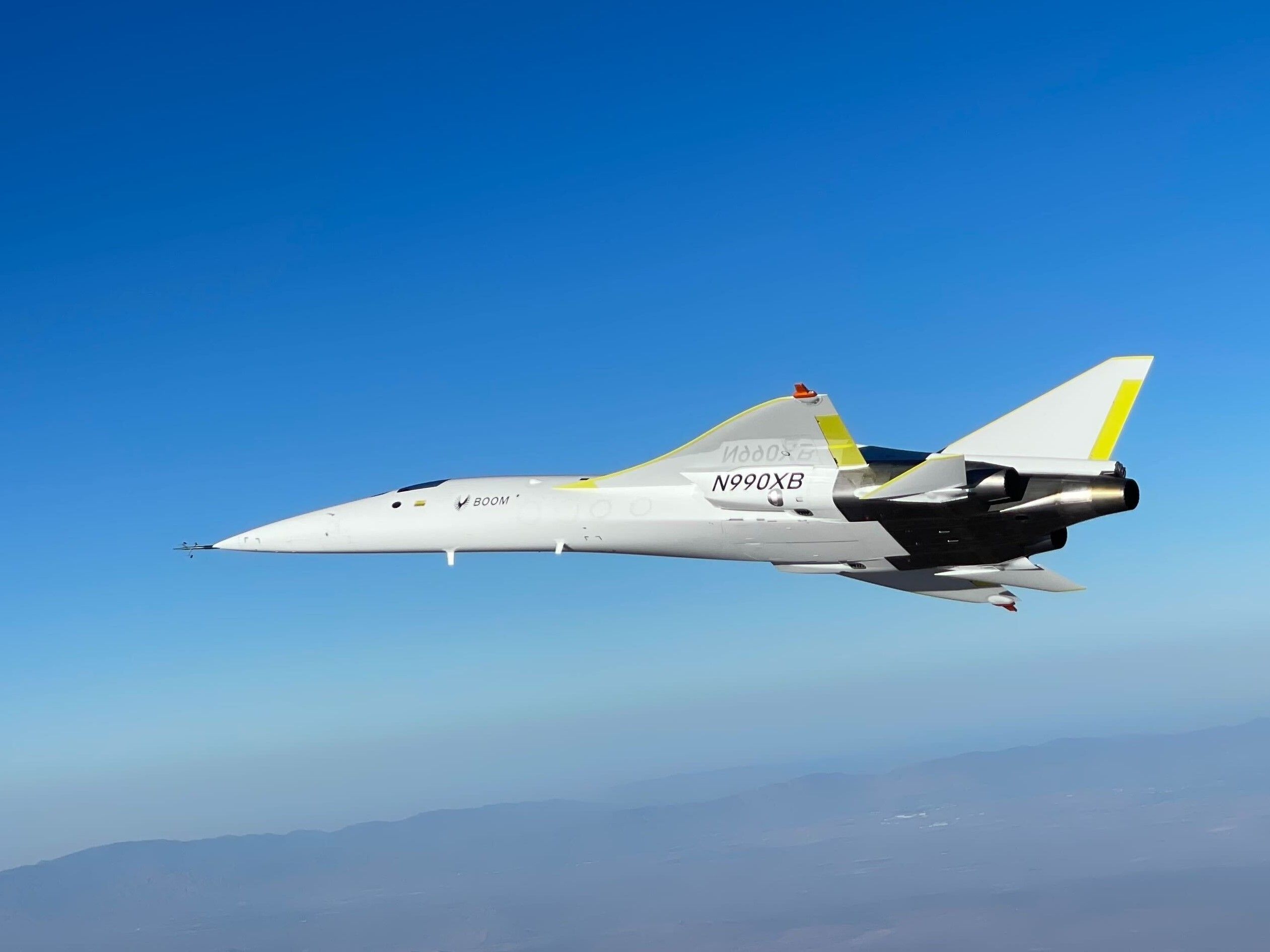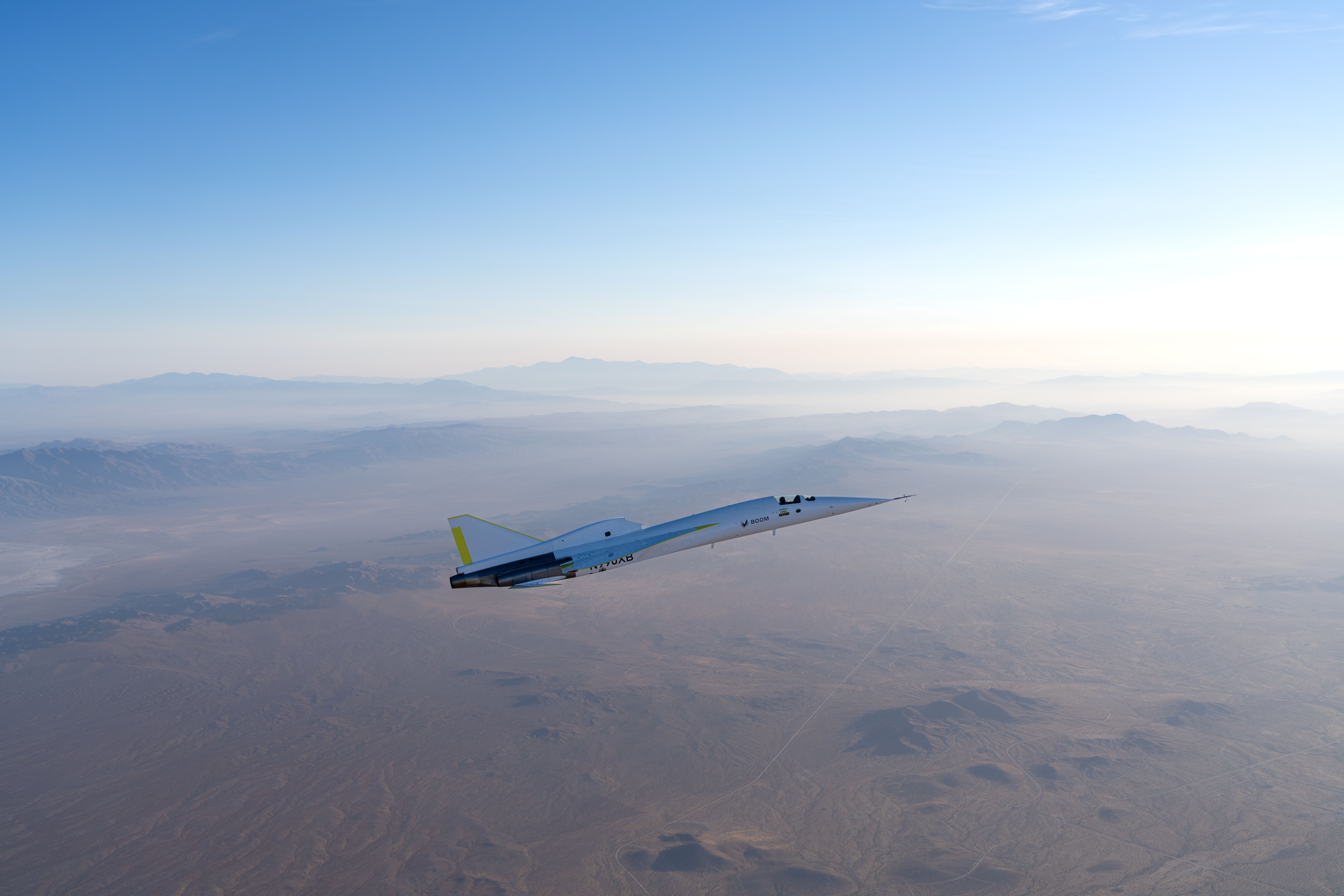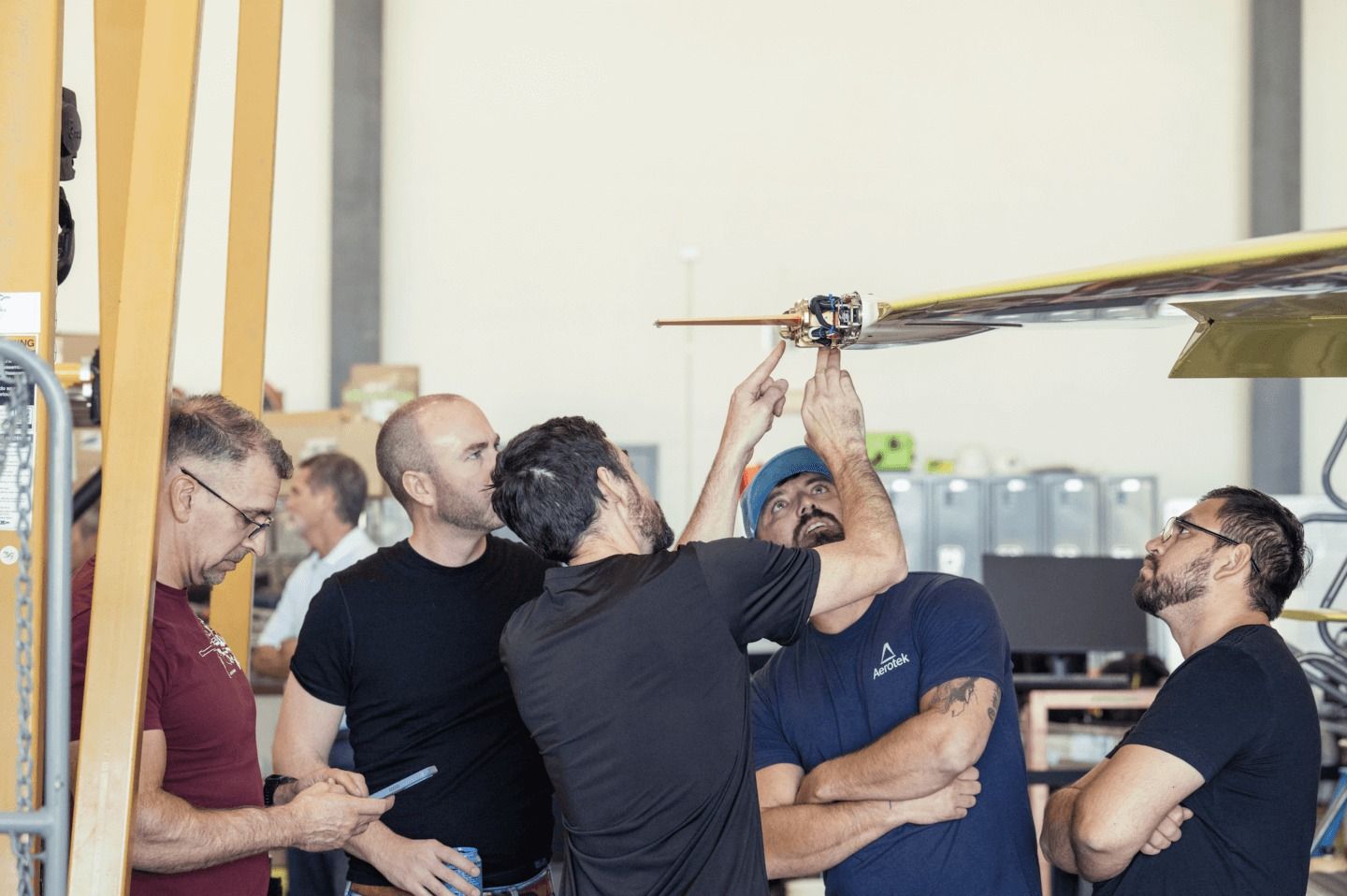Boom Supersonic
conducted today a fourth and successful Boom XB-1
test flight, this time reaching an altitude of 16,150 feet and a speed of Mach 0.617 (about 313 knots equivalent airspeed) during tests for flutter, g-forces, handling, and landing gear. The proof-of-concept XB-1 is helping educate Boom Supersonic on how to build and test supersonic aircraft in the lead-up to building Boom Overture
.
A significant G-force test and good handling plus speed
A key part of the fourth test flight was for the XB-1 to make a tight 2.78G turn, exceeding the 2G turn required for XB-1 to enter the previously cleared supersonic airspace. XB-1 easily made the turn. One should note that Boom Overture will not have to squeeze into a tight airspace corridor and pull 2.78 times gravity to fly supersonically.
Photo: Boom Supersonic
However, the flight tested the handling of XB-1 up to 313 knots, and XB-1 performed OK as XB-1
did in the previous test flight where XB-1 But handling, speed, and Gs were not the only things tested on this flight – another landing gear retraction and extension test was needed.
Another landing gear test
Boom Supersonic also extended and retracted the landing gear at 225 knots (259 miles per hour/417 kilometers per hour). This will be the maximum speed the XB-1’s landing gear will need to extend.
Flutter testing did begin, but…
In the previous flight test, attempts to test the flutter excitation system (FES) failed. Flutter is important to test for as flutter is when a wing vibrates. One can watch an explainer below:
As such, the FES will be shipped back to vendor per CEO Blake Scholl’s tweets putting 3-4 weeks of a break into the test flight schedule. One can see below what the FES looks like on the XB-1 wing:
Photo: Boom Supersonic
But during the test flight, some preliminary testing of the FES went ok. FES testing is important to ensure that the XB-1 can be flown safely at speed, even though handling has gone OK in each test flight.
Perhaps now would be a good time to explain why XB-1 has not flown supersonic yet.
Why ten test flights before XB-1 goes supersonic?
XB-1’s Chief Flight Test Engineer Nick Sheryka explained that all the XB-1 systems need to be tested before going supersonic.
Sheryka stressed that;
“The focus of the XB-1 program is to demonstrate human-rated supersonic vehicle technology at a price point that you and I can afford to use for personal travel once scaled up to an airliner. … XB-1 is establishing our culture firmly as a safety-first organization, and we need to do so without compromising.”
Many people who want to return to commercial supersonic flight like in the era of the Concorde after the Concorde’s final flights almost 21 years ago, find patience difficult to come by. Below are some Concorde
photos for reference:
Perhaps some of those same souls longing for supersonic flight again were flying commercially and saw XB-1 conduct today’s test flight…
Marketing to Southwest Airlines
Boom Supersonic was able to take XB-1 close to Southwest Airlines Flight WN351 today.
Boom Supersonic’s CEO Blake Scholl then followed up with a simple sales pitch:
Now that Alaska Air Group is finalizing merging with Hawaiian Airlines, one wonders if Blake Scholl will pitch Alaska Air Group next. Plus, a fan of Alaska Airlines wrote an analysis for Simple Flying of potential Boom Overture use on Alaska Airlines routes:
But this is a long way from XB-1 successfully completing a test program. So, as they say on “The West Wing,” what’s next?
Bottom line: What’s next for XB-1
According to a Boom Supersonic spokeswoman, the XB-1 needs ten total flights before going supersonic—presuming no surprises are found in these test flights. The goal is to take the XB-1 supersonic by the end of 2024. Boom Supersonic also possesses a supersonic flight authorization from the FAA when that test flight is appropriate.



